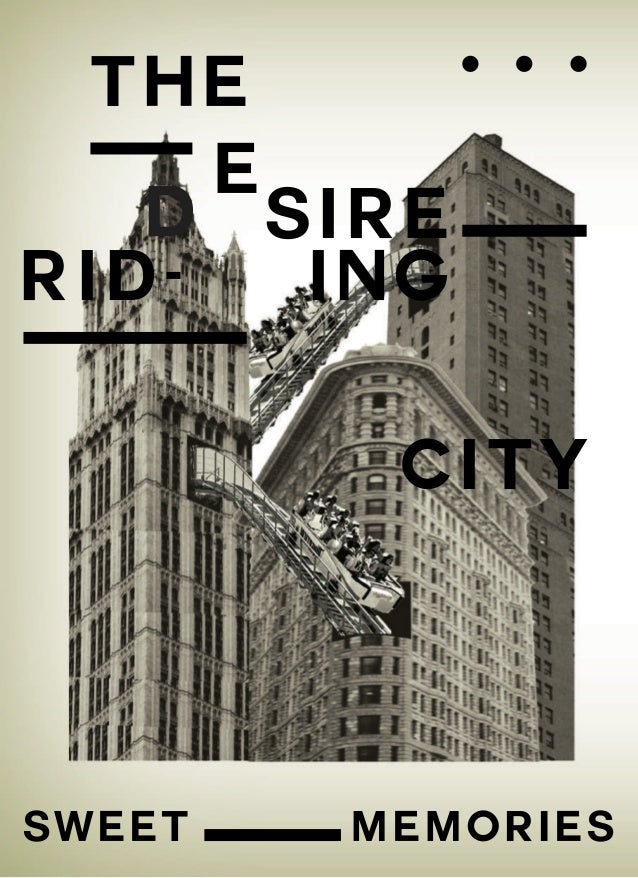Free download or read online Invisible Cities pdf (ePUB) book. The first edition of this novel was published in 1972, and was written by Italo Calvino. The book was published in multiple languages including English language, consists of 165 pages and is available in Paperback format.
| Author | Italo Calvino |
|---|---|
| Original title | Le città invisibili |
| Translator | William Weaver |
| Cover artist | René Magritte, The Castle in the Pyrenees, 1959 |
| Country | Italy |
| Language | Italian |
| Publisher | Giulio Einaudi |
Publication date | 1972 |
| 1974 | |
| Media type | Print (Hardcover & Paperback) |
| Pages | 165 pp (first English edition) |
| ISBN | 0-15-145290-3 (first English edition) |
| OCLC | 914835 |
| 853/.9/14 | |
| LC Class | PZ3.C13956 In PQ4809.A45 |
Invisible Cities (Italian: Le città invisibili) is a novel by Italian writer Italo Calvino. It was published in Italy in 1972 by Giulio Einaudi Editore.
Description[edit]
The book explores imagination and the imaginable through the descriptions of cities by an explorer, Marco Polo. The book is framed as a conversation between the elderly and busy emperor Kublai Khan, who constantly has merchants coming to describe the state of his expanding and vast empire, and Polo. The majority of the book consists of brief prose poems describing 55 fictitious cities that are narrated by Polo, many of which can be read as parables or meditations on culture, language, time, memory, death, or the general nature of human experience.

Short dialogues between Kublai and Polo are interspersed every five to ten cities discussing these topics. These interludes between the two characters are no less poetically constructed than the cities, and form a framing device that plays with the natural complexity of language and stories. In one key exchange in the middle of the book, Kublai prods Polo to tell him of the one city he has never mentioned directly—his hometown. Polo's response: 'Every time I describe a city I am saying something about Venice.'
Historical background[edit]
Invisible Cities deconstructs an archetypal example of the travel literature genre, The Travels of Marco Polo, which depicts the journey of the famed Venetian merchant across Asia and in Yuan Dynasty (Mongol Empire) China. The original 13th-century travelogue shares with Calvino's novel the brief, often fantastic accounts of the cities Polo claimed to have visited, along with descriptions of the city's inhabitants, notable imports and exports, and whatever interesting tales Polo had heard about the region.
Structure[edit]
Over the nine chapters, Marco describes a total of fifty-five cities, all women's names. The cities are divided into eleven thematic groups of five each:
- Cities & Memory
- Cities & Desire
- Cities & Signs
- Thin Cities
- Trading Cities
- Cities & Eyes
- Cities & Names
- Cities & the Dead
- Cities & the Sky
- Continuous Cities
- Hidden Cities
He moves back and forth between the groups, while moving down the list, in a rigorous mathematical structure. The table below lists the cities in order of appearance, along with the group they belong to:
| Chapter No. | Memory | Desire | Signs | Thin | Trading | Eyes | Names | Dead | Sky | Continuous | Hidden |
|---|---|---|---|---|---|---|---|---|---|---|---|
| 1 | Diomira | ||||||||||
| Isidora | |||||||||||
| Dorothea | |||||||||||
| Zaira | |||||||||||
| Anastasia | |||||||||||
| Tamara | |||||||||||
| Zora | |||||||||||
| Despina | |||||||||||
| Zirma | |||||||||||
| Isaura | |||||||||||
| 2 | Maurilia | ||||||||||
| Fedora | |||||||||||
| Zoe | |||||||||||
| Zenobia | |||||||||||
| Euphemia | |||||||||||
| 3 | Zobeide | ||||||||||
| Hypatia | |||||||||||
| Armilla | |||||||||||
| Chloe | |||||||||||
| Valdrada | |||||||||||
| 4 | Olivia | ||||||||||
| Sophronia | |||||||||||
| Eutropia | |||||||||||
| Zemrude | |||||||||||
| Aglaura | |||||||||||
| 5 | Octavia | ||||||||||
| Ersilia | |||||||||||
| Baucis | |||||||||||
| Leandra | |||||||||||
| Melania | |||||||||||
| 6 | Esmeralda | ||||||||||
| Phyllis | |||||||||||
| Pyrrha | |||||||||||
| Adelma | |||||||||||
| Eudoxia | |||||||||||
| 7 | Moriana | ||||||||||
| Clarice | |||||||||||
| Eusapia | |||||||||||
| Beersheba | |||||||||||
| Leonia | |||||||||||
| 8 | Irene | ||||||||||
| Argia | |||||||||||
| Thekla | |||||||||||
| Trude | |||||||||||
| Olinda | |||||||||||
| 9 | Laudomia | ||||||||||
| Perinthia | |||||||||||
| Procopia | |||||||||||
| Raissa | |||||||||||
| Andria | |||||||||||
| Cecilia | |||||||||||
| Marozia | |||||||||||
| Penthesilea | |||||||||||
| Theodora | |||||||||||
| Berenice |
In each of the nine chapters, there is an opening section and a closing section, narrating dialogues between the Khan and Marco. The descriptions of the cities lie between these two sections.
The matrix of eleven column themes and fifty-five subchapters (ten rows in chapters 1 and 9, five in all others) shows some interesting properties. Each column has five entries, rows only one, so there are fifty-five cities in all. The matrix of cities has a central element (Baucis). The pattern of cities is symmetric with respect to inversion about that center. Equivalently, it is symmetric against 180 degree rotations about Baucis. Inner chapters (2-8 inclusive) have diagonal cascades of five cities (e.g. Maurila through Euphemia in chapter 2). These five-city cascades are displaced by one theme column to the right as one proceeds to the next chapter. In order that the cascade sequence terminates (the book of cities is not infinite!) Calvino, in chapter 9, truncates the diagonal cascades in steps: Laudomia through Raissa is a cascade of four cities, followed by cascades of three, two, and one, necessitating ten cities in the final chapter. The same pattern is used in reverse in chapter 1 as the diagonal cascade of cities is born. This strict adherence to a mathematical pattern is characteristic of the Oulipo literary group to which Calvino belonged.
Awards[edit]
The book was nominated for the Nebula Award for Best Novel in 1975.[1]
Opera[edit]
Invisible Cities (and in particular the chapters about Isidora, Armilla, and Adelma) is the basis for an opera by composer Christopher Cerrone, first produced by The Industry[2] in October 2013 as an experimental production at Union Station in Los Angeles. In this site-specific production directed by Yuval Sharon, the performers, including eleven musicians, eight singers, and eight dancers, were located in (or moved through) different parts of the train station, while the station remained open and operating as usual. The performance could be heard by about 200 audience members, who wore wireless headphones and were allowed to move through the station at will.[3][4][5] An audio recording of the opera was released in November 2014.[6][7][8] The opera was named a finalist for the 2014 Pulitzer Prize for Music.[9]
See also[edit]
| Wikiquote has quotations related to: Italo Calvino |
References[edit]
- ^https://nebulas.sfwa.org/award-year/1975/
- ^http://www.TheIndustryLA.org
- ^Reed Johnson, 'Union Station the platform for the opera 'Invisible Cities': The Industry opera company and L.A. Dance Project are presenting 'Invisible Cities' on a unique platform — Union Station train terminal — and beaming it through headphones.'Los Angeles Times, October 19, 2013.
- ^Mark Swed, 'Review: An inward tour through 'Invisible Cities', Los Angeles Times, October 21, 2013.
- ^Jeffrey Marlow, 'Is This the Opera of the Future?', Wired, October 22, 2013.
- ^Jessica Gelt, 'The Industry starts label, to hold free concert at Union Station', Los Angeles Times, October 2, 2014.
- ^Sandra Barrera, 'Invisible Cities' is first release for The Industry’s new record label', Los Angeles Daily News, October 24, 2014.
- ^Julie Baumgardner, 'In a Busy Train Station, a Postmodern Opera Takes Shape', The New York Times, October 29, 2014.
- ^The 2014 Pulitzer Prize Winners: Music, Pulitzer.org, April 14, 2014.
External links[edit]
- Silvestri, Paolo, 'After-word. 'Invisible cities': which (good-bad) man? For which (good-bad) polity?', in P. Heritier, P. Silvestri (eds.), Good government, Governance and Human Complexity. Luigi Einaudi’s Legacy and Contemporary Society, Leo Olschki, Firenze, 2012, pp. 313-332. https://ideas.repec.org/p/pra/mprapa/59535.html
Book author: Italo Calvino
Brief introduction:
In a garden sit the aged Kublai Khan and the young Marco Polo—Tartar emperor and Venetian traveler. Kublai Khan has sensed the end of his empire coming soon. Marco Polo diverts the emperor with tales of the cities he has seen in his travels around...
more details below- ISBN
- 9780099429838
- Publisher
- Houghton Mifflin Harcourt
- Publication date
- Aug 05, 2002
- Age range
- 18+ Years
- Book language
- English
- Pages
- 176
- Format
- PDF, DJVU, DOC, FB2
- Quality
- Normal quality scanned pages
- Dimensions
- 5.08 (w) x 7.80 (h) x 0.51 (d)
Some brief overview of this book
In a garden sit the aged Kublai Khan and the young Marco Polo—Tartar emperor and Venetian traveler. Kublai Khan has sensed the end of his empire coming soon. Marco Polo diverts the emperor with tales of the cities he has seen in his travels around the empire: cities and memory, cities and desire, cities and designs, cities and the dead, cities and the sky, trading cities, hidden cities. Soon it becomes clear that each of these fantastic places is really the same place.
One of the worlds best storytellers, Italo Calvino (Invisible Cities) pinpoints for future generations the universal values for literature. Here are his works, methods, intentions, and hopes.
See more interesting books:
- The Three-Minute Classroom Walk-Through: Changing School Supervisory Practice One Teacher at a TimePDF
- Why Read the Classics?PDF
- The AeneidPDF
- Saturday Millionaires: How Winning Football Builds Winning CollegesPDF
- Creature of the WordPDF
- Can I Play You My Song?: The Compositions and Invented Notations of ChildrenPDF
Invisible Cities English Pdf

How to download e-book
Press button 'GET DOWNLOAD LINKS' and wait 20 seconds. This time is necessary for searching and sorting links. One button - 15 links for downloading the book 'Invisible Cities' in all e-book formats!
May need free signup required to download or reading online book.
A few words about book author
ITALO CALVINO’s superb storytelling gifts earned him international renown and a reputation as “one of the worlds best fabulists” (New York Times Book Review). He is the author of numerous works of fiction, as well as essays, criticism, and literary anthologies. Born in Cuba in 1923, Calvino was raised in Italy, where he lived most of his life. At the time of his death, in Siena in 1985, he was the most-translated contemporary Italian writer.